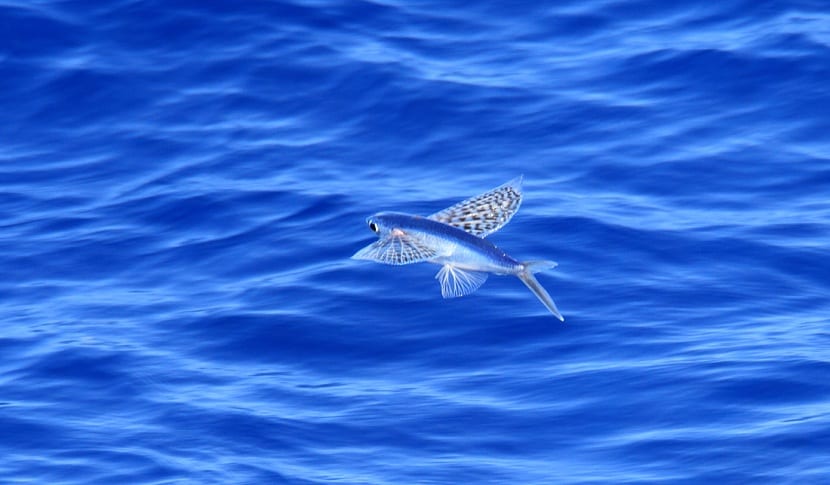
Nature never ceases to amaze us at all times. Although the habitat of fish is within the seas and oceans, there are fish such as the flying fish that have characteristics in their body morphology that make them have great skills in gliding out of the water. It is about the impressive flying fish.
How is it possible that a fish, whose habitat is underwater, have the skills to plan outside of it? If you want to discover everything about these flying fish, keep reading 🙂
Flying fish characteristics
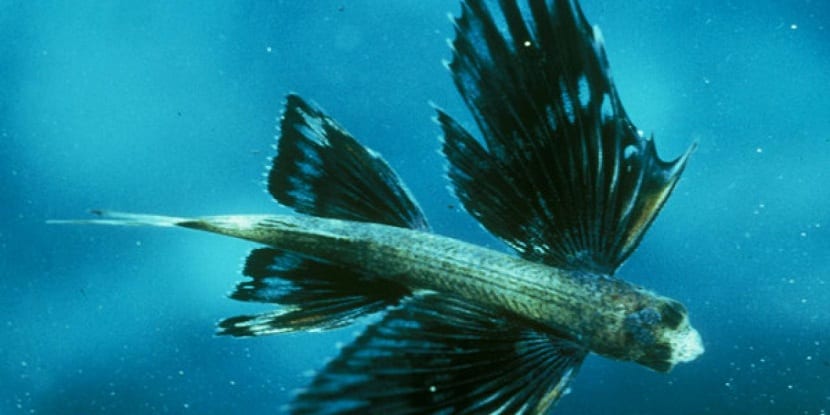
There are many species de peces flying and all belong to the large family of Esocetidae, of the order Ateriniformes. The most common species known as flying fish is known as exocoetus volitans.
These fish have large pectoral fins that take on a wing-like appearance and that is why they have been named after them. These "wings" give them the ability of the fish to glide relatively easily out of the water. Its body also has a very dynamic morphology to which its pelvic fins are attached and make it a real flying fish.
These fish spend most of their time near the surface of the ocean where they perform their jumps and flights, as if they were birds. Their fins have different sizes, some of them being very large, which makes them look like more than two fins.
Another characteristic that flying fish have that makes them so special is their eyes. They are so flattened in shape that they present a super sprouted view and almost larger than their orbit. This form of the eyes, like everything in the biology of living organisms, has its reason for being. And it is that, thanks to these eyes, they are able to look out of the water very easily while flying. They also favor them to evade predators, since these fish are attacked by a large number of them.
Through time and evolution, they have been able to develop this ability to "fly" to stay active and guard against predators who do not have that ability. They are able to keep gliding for a few seconds, which gives them a great advantage in fleeing their predators.
They are also considered very intelligent animals, since they have been able to add these abilities throughout their evolution to increase their chances of survival in the ocean.
Shape of your body and flight
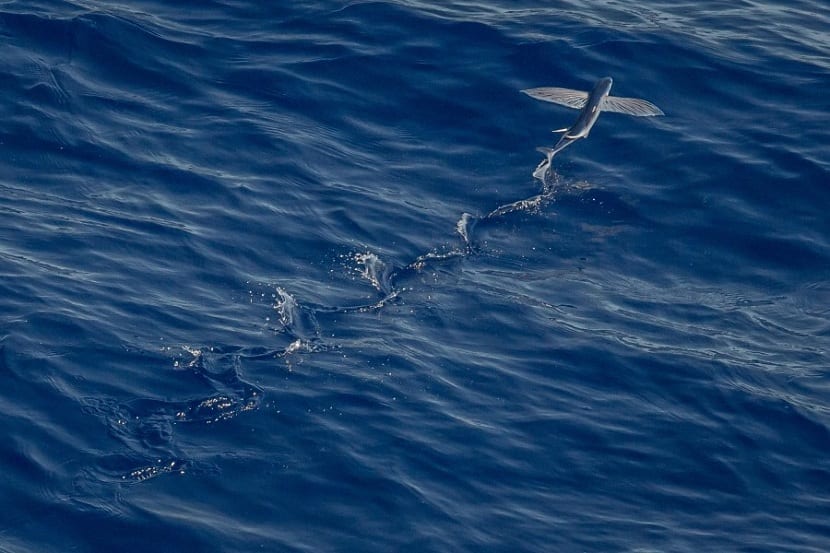
The body of these fish is lined with large scales whose consistency is smooth. Thanks to the fact that they do not weigh much, they can glide longer in the air when they jump. They have the upper lobe of the tail fin of a medium size and on the edge of their body it has some folds that go to both sides.
The body is brown with some darker shades on the back and a white band behind the pectoral fins. The pelvic and pectoral fins are what it uses for flight and its tail is the starter to propel itself.
When these fish take flight (again we clarify that it is not a flight as such, but more an activity of extreme gliding) it is quite a spectacle. When they glide, They are capable of traveling distances between 60 and 100 meters at a speed of 55 kilometers per hour. This is something impressive in nature and, therefore, it never ceases to amaze us. A fish, whose habitat is in water, is able to "fly" out of it over those distances.
To be able to cover these distances, they need to flap their fins more than fifty times in just one second. Thanks to this flapping they can maintain their glide until they can cover more distance.
Seeing a flying fish glide is fantastic, but seeing one of them perform these gliding maneuvers is a spectacle of nature. These fish are found most of the time doing these jumps and staying out of the water.
During the summer time they can be seen loitering near the beaches. They are able to take advantage of air currents to further develop their flight capacity and reach distances of up to four hundred meters.
Habitat
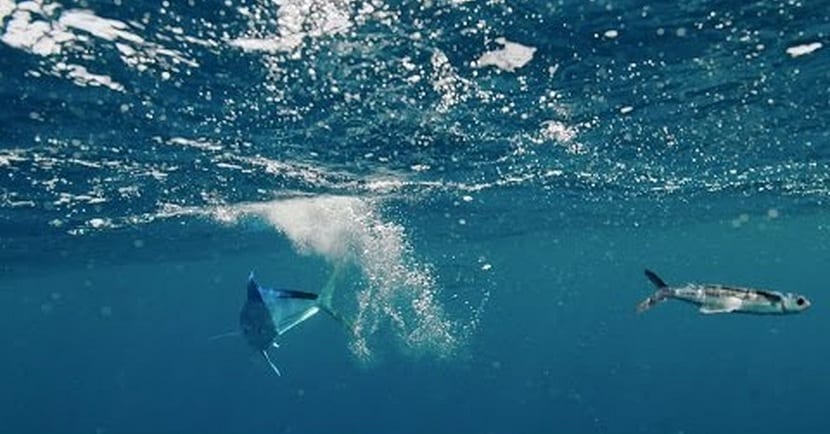
As mentioned before, flying fish settle down in areas whose depth is shallow. They move away from the coast in winter and visit them again in summer. The preferred waters of these fish are tropical and subtropical.
They are good at sheltering in places where they can easily get their food. The most common flying fish is established in the waters of the Atlantic and the Mediterranean.
Food
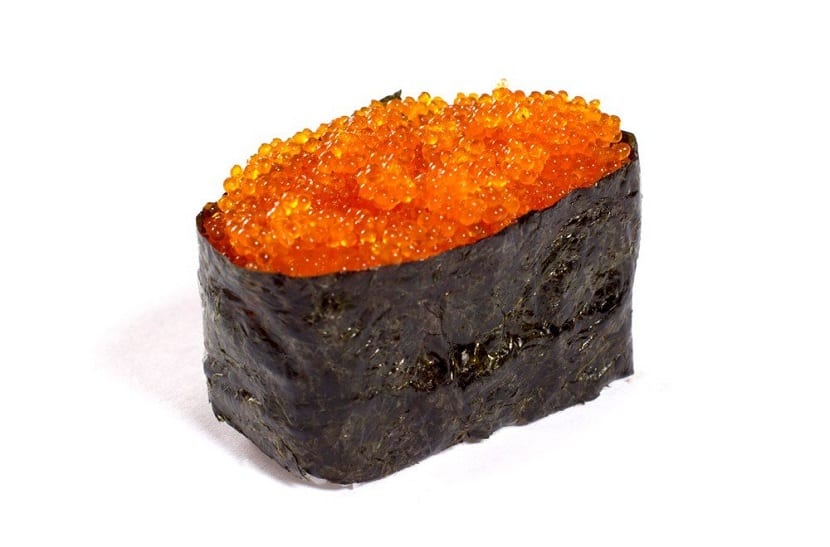
The feeding of these fish is basically to eat plankton. On many occasions they can also eat other small fish and some of medium size. This fish is not very dangerous.
Their eggs are used in Japan to prepare sushi. This fish does not worry too much about its diet, but takes more care to keep its flights aerodynamic.
Reproduction
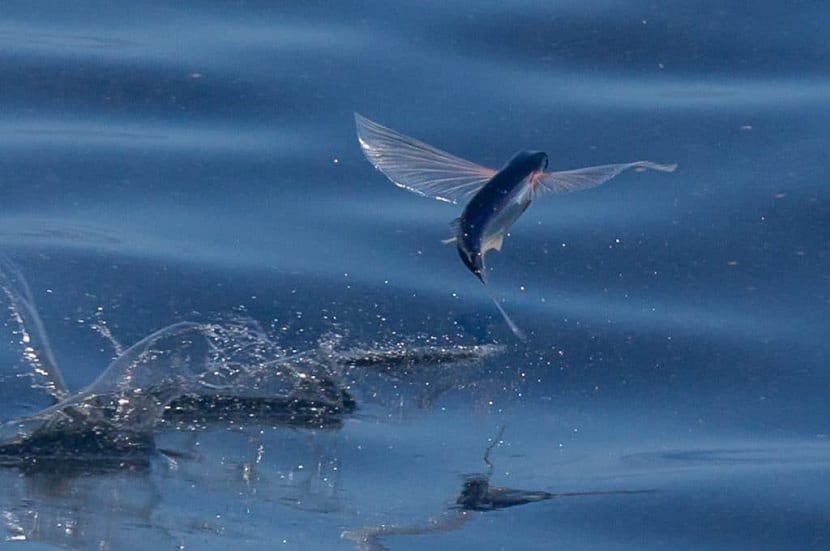
These fish reproduce by eggs. They are deposited by females on algae or other marine elements that help them stay close to the surface of the water. The eggs they are held together by small, very thin cords.
When the eggs hatch, many larvae hatch and bear no resemblance to the characteristics of a flying fish. As they become adults, they acquire their special characteristics.
These fish are not in any protection status. However, their eggs they are very precious for making sushi. To avoid its threat to populations, some laws must be found that help protect these fish and be able to conserve them. Its most common predator is the sailfish. After this fish, tuna, mackerel and swordfish are also a strong predator.
As you can see, nature never ceases to amaze us and offers us shows like this one. Flying fish are worth seeing and will offer us something we have never seen before.